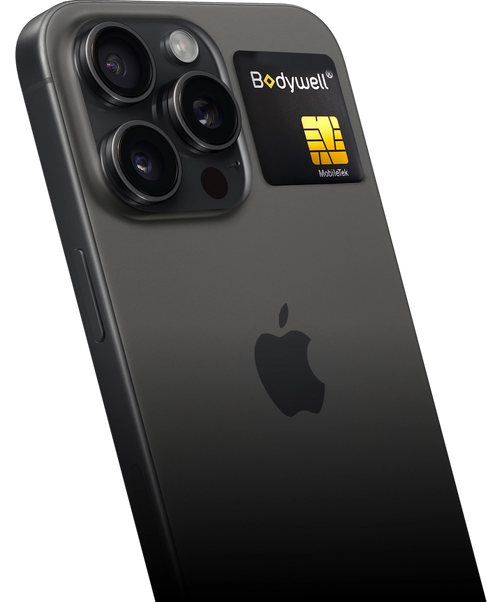Breast cancer among young women without a family history or genetic predisposition is rare, making recent case studies all the more alarming. These reports highlight an unusual pattern: four young women aged 21 to 39, all diagnosed with multifocal invasive breast cancer after years of placing their cellular phones in their bras for extended periods.
Each of these women consistently kept their phones tucked against their breasts for up to 10 hours a day over several years, developing tumors in the exact areas where their phones rested. None of them had any genetic predisposition for breast cancer, nor a family history of the disease. Despite these factors, all were diagnosed with breast cancer, with strikingly similar pathologies—hormone-positive tumors with extensive ductal carcinoma in situ (DCIS) and invasive components.
These findings raise questions about the potential link between prolonged exposure to the nonionizing radiation emitted by cellular phones and the development of breast cancer. Although electromagnetic radiation (EMR) emitted by phones does not directly damage DNA as ionizing radiation does, it has been classified as a possible human carcinogen by the International Agency for Research on Cancer. Studies suggest that long-term, high exposure to EMR, especially from direct contact with the skin, may pose health risks, including an increased risk of cancers such as glioma and breast carcinoma.
The Potential Impact of Prolonged Cellular Phone Exposure
Cellular phones emit EMR in the form of radiofrequency (RF) waves, which can produce thermal effects by heating tissue, as well as nonthermal effects that may disrupt cellular microenvironments. The cases in this study are particularly concerning because of the prolonged, direct skin contact between the women’s phones and their breast tissue. Despite phone manufacturers recommending keeping phones a safe distance from the body, many people carry their phones near sensitive areas of the body for convenience.
Interestingly, all four women’s tumors shared similar characteristics: hormone-positive, estrogen and progesterone receptor-positive, and Her2-negative. Moreover, the multifocal nature of their cancers was centered in the precise areas of breast tissue that had direct phone contact. These similarities, though inconclusively, suggest that the prolonged contact with RF energy emitted by phones may have played a role in the development of their cancer.
Let’s take a closer look at three of these cases:
Case 1: A 21-Year-Old with Unusual Nipple Discharge and Breast Cancer Diagnosis
A 21-year-old woman presented with spontaneous bloody discharge from her left nipple. After keeping her phone tucked into her bra on the left side for several hours a day, her mammogram revealed significant abnormalities—12 cm of calcifications and densities stretching from the retroareolar region to the chest wall. An MRI further showed extensive abnormal enhancement.
She underwent a mastectomy, and pathology revealed extensive ductal carcinoma in situ (DCIS) with multifocal microinvasion. Fortunately, her sentinel lymph nodes were negative, indicating that the cancer had not spread.
Case 2: A 21-Year-Old with a Palpable Breast Mass
Another 21-year-old woman had stored her phone in her bra for up to 8 hours a day over six years, developing a breast mass. Her MRI revealed four distinct lesions in the upper hemisphere of her left breast. A mastectomy later confirmed multifocal invasive cancer and extensive DCIS. Unfortunately, two out of nine axillary lymph nodes tested positive for metastasis, and further studies revealed bone metastasis.
Case 3: A 33-Year-Old with Multiple Lesions in Her Right Breast
A 33-year-old woman presented with two palpable masses in the upper outer quadrant of her right breast, where she had placed her phone during jogging sessions over eight years. Her MRI showed six suspicious lesions spanning an 8 cm area, which was later confirmed to be multifocal invasive cancer with extensive DCIS. A metastasis was found in one sentinel lymph node, showing early spread beyond the breast.
Key Observations from These Cases
- Uncommon in Young Women: Breast cancer in women under 40 is extremely rare, especially in those with no family history or genetic predisposition. All three women were young, BRCA-negative, and presented with multifocal cancers located in the exact areas where their phones rested.
- Prolonged Direct Contact with Phones: Each woman had a history of prolonged phone contact against their breasts, with all tumors clustering under the areas of phone placement. The fact that their tumors shared similar characteristics raises concerns about a potential association between prolonged RF exposure and breast cancer.
These case studies highlight the urgent need for more research into the long-term effects of electromagnetic radiation, particularly for individuals who carry their phones directly against their skin.
Cellular Phone Safety Regulations and the Concerns They Raise
Current cellular phone safety regulations in the United States were established by the Federal Communication Commission (FCC) in 1996, a time when cell phone usage was significantly lower and the technology was less advanced. These regulations were designed to measure the Specific Absorption Rate (SAR), which refers to the rate at which the human body absorbs radiation from cell phones. The FCC set the maximum allowable SAR limit at 1.6 watts per kilogram of tissue.
However, the SAR measurements used to establish these guidelines were based on tests conducted using a 200-pound simulated male head, measuring the energy penetration within a plexiglass model. While this provided a basic measure of safety, several critical factors were overlooked, including prolonged exposure durations and the impact of direct contact between cell phones and sensitive body areas like breast tissue.
A significant gap in these regulations is that FCC guidelines do not account for direct skin contact with cellular devices. As we’ve seen in the cases from the study, young women carried their phones directly against their skin—often in their bras—exposing themselves to radiofrequency (RF) radiation for extended periods. This kind of exposure was not considered when the FCC set the safety standards, which are based on short-term exposure (30 minutes) and do not reflect the cumulative effects of long-term, daily contact.
Additionally, modern smartphones differ from older cellular devices in that they often transmit and receive signals intermittently, even when the user is not actively using them. This passive exposure to electromagnetic radiation (EMR) is yet another factor that current regulations do not fully address. Smartphones, unlike older models, regularly transmit data, increasing the overall exposure to RF energy even during periods when the phone is in a pocket or bra.
While manufacturers include disclaimers in their manuals advising users to keep phones at a distance from their bodies—for example, the iPhone manual advises maintaining at least 1.5 cm of distance—many users are unaware of these recommendations or find it impractical to follow them in daily life.
Protecting Your Health in an Increasingly Connected World
The growing reliance on smartphones means it's more critical than ever to be mindful of the potential health risks posed by prolonged exposure to EMF radiation. While ongoing research continues to explore these risks, taking precautions to minimize exposure is essential, particularly for those who frequently keep their phones close to their bodies.
At Bodywell®, we understand the potential concerns surrounding EMF exposure, and we’ve developed solutions that can help you stay connected without compromising your health. Unlike many products that block RF energy and interfere with your phone's functionality, Bodywell®’s EMF protection devices reduce radiation absorption without affecting signal strength or phone performance.
Here’s how Bodywell® can help you minimize exposure to harmful radiation:
- Thermal Reduction: Our products reduce the heat-related effects of your devices by up to 20%, ensuring more comfortable and safer usage over long periods.
- SAR Reduction: Bodywell® lowers the Specific Absorption Rate (SAR)—the measure of the rate at which the body absorbs radiation—by up to 80%. This drastically cuts down the amount of radiation your body is exposed to.
- pH Balance Recovery: Prolonged exposure to electromagnetic fields can disturb your body’s natural pH levels. Bodywell® helps restore your pH balance by 100%, promoting overall well-being.
With Bodywell®, you don’t need to compromise on your device usage. You can enjoy all the benefits of modern technology while taking active steps to protect your long-term health. Whether you're at home or in the workplace, Bodywell®’s solutions offer peace of mind in an ever-connected world.






















Leave a comment
This site is protected by hCaptcha and the hCaptcha Privacy Policy and Terms of Service apply.